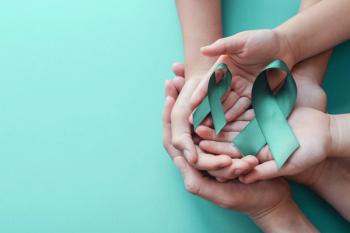
Sarah Raifman, PhD, MSc, highlights the link between heavy drinking and pregnancy
A new study using advanced pregnancy preference measures reveals that heavy alcohol use significantly increases the risk of unintended pregnancy, highlighting the need for personalized contraceptive support.
In a recent interview with Contemporary OB/GYN, Sarah Raifman, PhD, MSc, project director and social epidemiologist at Advancing New Standards in Reproductive Health, discussed findings from a recent study examining the relationship between heavy alcohol consumption and the risk of unintended pregnancy.
The study confirmed that individuals who drink heavily are at greater risk of becoming pregnant when they do not want to be, which is an observation consistent with prior research. However, Raifman emphasized that what sets this study apart is its innovative and rigorous methodological approach, particularly in how pregnancy preferences are measured.
Traditional studies have often relied on binary classifications, labeling pregnancies as either "intended" or "unintended." This fails to capture the full spectrum of feelings people may have about becoming pregnant. Moreover, these preferences have usually been measured retrospectively, either during pregnancy or after childbirth. In contrast, Raifman’s study employed the Desire to Avoid Pregnancy scale, a novel tool that captures the nuanced range of pregnancy preferences prospectively, meaning before a pregnancy occurs. This methodological improvement allows for a more accurate and detailed understanding of the dynamics between substance use and reproductive outcomes.
From a public health standpoint, these findings are highly significant. They underscore the need for targeted interventions that support individuals, especially those who drink heavily, in achieving their reproductive goals. Raifman stressed that the aim is not to impose particular contraceptive methods based on drinking behavior, such as automatically recommending long-acting reversible contraception, but rather to provide respectful, individualized support. This includes raising awareness about the increased risk of pregnancy associated with heavy drinking and helping individuals find contraceptive options that align with their personal preferences and lifestyles.
According to Raifman, further research is needed to explore why heavy drinking increases pregnancy risk. This includes examining whether it affects contraceptive use or other sexual behaviors and how these factors might vary depending on a person's desire to avoid pregnancy. The study will continue to follow participants through their pregnancies to investigate whether those with less desired pregnancies are more likely to continue using alcohol or drugs.
Interestingly, the study did not find a similar link between cannabis use and unintended pregnancy, suggesting potential behavioral differences between users of alcohol and cannabis. However, because of the limited existing research on cannabis and pregnancy preferences, more studies are needed to understand this relationship fully.
In closing, Raifman reinforced the importance of providing compassionate, individualized care to all individuals, especially those struggling with substance use, to help them meet their reproductive goals effectively.
No relevant disclosures.
Reference
Heavy drinking raises the risk of undesired pregnancy; cannabis use does not. Society for the Study of Addiction. July 31, 2025. Accessed August 05, 2025. https://www.eurekalert.org/news-releases/1092349
Newsletter
Get the latest clinical updates, case studies, and expert commentary in obstetric and gynecologic care. Sign up now to stay informed.










